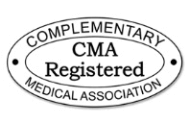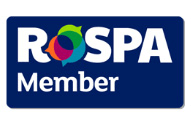Learning Blog
How to Spot the Signs of ADHD - What Every Educator Should Know
hilst ADHD is one of the most common conditions which affects the behaviour of children in school. It causes difficulty in learning and can potentially cause problems for those in the same environment if the condition and behaviours are not well managed.
Whilst parents have a responsibility to manage their own children and to ensure that they are ready for school and make the most of the opportunities offered, in reality, it is the teacher or teachers who have day-to-day responsibility for ensuring that students achieve all they can.
Given that the estimated prevalence of ADHD in the UK school-age population is around 4% for boys and 1% for girls, every educator should know how to spot the signs and proactively manage ADHD in their environment.
What is ADHD?
Attention deficit hyperactivity disorder (ADHD) is a behavioural disorder that means people with the condition struggle to maintain attention on tasks, can be highly active and have a lack of impulse control, which means they may do things without thinking.
Whilst it is common for symptoms to begin in early childhood, it is often when a child starts school that the child with ADHD tends to stand out as different to their peers, especially when their peers quickly learn what is expected of them and they do not.
The behavioural gap between the child with ADHD and his/her peers grows over time so that by the time the child is in year 3-4 at school, there is a move toward identification and diagnosis. To be diagnosed as having ADHD, a child has to show signs of the condition in more than one environment.
Whilst a GP is often the first port of call, the condition usually requires a referral to a specialist employed by the NHS. This is always the case if there is an intention to give the child medication to help them manage their symptoms better.
ADHD appears to have a mixture of genetic and social factors which are difficult to untangle.
It is known from MRI scans that the brains of people with ADHD have some differences when compared to people without the condition. Other possible factors include premature birth and substance abuse during pregnancy.
However the condition is arrived at, it is real and the person needs support.
Generally, symptoms improve with age because people with ADHD experience a late-maturing of their brain functions. However, many, though by no means all, continue to experience problems and may have difficulty keeping a job, managing relationships and even possible issues with alcohol and illegal drugs. It isn’t possible to distinguish between the effects of ADHD and what the effects of having it has upon self-esteem and social isolation, both of which can lead to the same outcomes. It is important for educators working in adult education to recognise this as a barrier to learning and help someone with ADHD succeed and, thus, turn around negative perceptions and low self-esteem.
What do Educators need to do?
According to Dr Christopher Green, a UK-based expert on the condition, there is a range of strategies that educators can employ to help a person with ADHD succeed. Consistency and lots of positive feedback can help (to counter low self-esteem and difficulties with peer relations).
Here are five easy things you can do to help a person with ADHD:
- Have a calm classroom - lead by example, use your voice well and model calmness and stillness. Reward those behaviours in the children in your classroom. Use proximity praise – if a child with ADHD is being disruptive, praise the nearest child who is on task and calmly working, and watch the effect.
- Avoid clutter – have a clear desk policy - only a pen, book etc. allowed. Children with ADHD are distractible and can’t help fiddling.
- Seating plan – put the child with ADHD next to calming children and remove an audience. Perhaps put them near the door so that it is easy to allow a “timeout” if your school policy allows it. Definitely avoid putting them near the window as what is going on outside will be more interesting than in your classroom!
- Look for the behaviours you want to see and reward them. Don’t expect a child with ADHD to perform at an age-appropriate level, but set realistic goals, for example, 5 minutes on a task, and reward them. Make sure they get rewarded alongside their peers to prevent low self-esteem.
- Lists – some people with ADHD may not be very good at sequencing, so if you give verbal sequencing instructions to the class, make sure you give a written copy to the child with ADHD, so they can tick off what they have done and move on.
Helping a student with ADHD succeed can be its own reward, but often you will get tangible rewards too, such as the surprise thanks in a supermarket years later!
If you wish to find out more about how to spot the signs of ADHD and how you can support someone living with this condition, please click on the link below to view our comprehensive online ADHD Awareness Diploma course.

Learn with confidence...



 RRP
$100
RRP
$100
Get a FREE Course
Tick this box to Sign up for our newsletter, and get access to the Interview Skills and CV Writing Certificate course for free! By signing up, you agree to our Privacy Notice & Cookie Policy and to receive marketing and related emails from academy+ brands. You can unsubscribe at any time.What our students say about us...

This course is a great way to brush up on my rusty excel skills, I recommend this course to anyone looking for something to do during lockdown, it's easy to use and talks you through each stage step by step. It has given me the confidence I need to further my career.
Georgia Darke

Yet another well laid out course. This is my 3rd course so far with New Skills Academy.
More than likely will be back for another one soon. This course was enjoyable to do, and I learnt a lot and passed first try. My certificate will be up on the wall soon.
Rob Coops

Omg im so excited, over joyed and all the good stuff that comes to mind! Wonderful experience doing lessons with New Skills Academy. I look foward to doing more courses with them. I hope this will encourage others to come on board and refresh your minds or to learn something new, it's a win win situation. I want to thank New Skills Academy so much for making this as simple as possible for me.
Shari Anderson

This is a great course for any level of knowledge. Very easy to navigate, great practical tasks and explanations are very clear. You can revise any module with no problem. The test wasn’t too hard if you completed every module. It may be handy to make some notes before you start. Overall I'm very happy with my choice. Thank you New skills for my New skills :)
Julia Bobkova

Wow what an incredible insight for the start of anyone's journey in property. This course gives you so much information and there are tests and questions on each of the modules. The course is very easy to follow and well laid out. You can actually make notes on the pages of each module using the notes tab! I am very excited to say that I passed and I only spent one week on this course. I will print all the PDF information and keep it in a file with my certificate. I feel very confident for my future plans now I have completed this course.
Nichola Anderson

I took up this course initially to help me with my own dog, but found that as I worked through the material I actually started thinking that this could be something that I could use to make a second income. From start to finish I found the course engaging and interesting. I am now doing another dog related course and am experiencing the same level of enjoyment. I would recommend New Skills Academy without hesitation.
Keith Smith

Excellent course, well explained and easy to understand. The course can be done at my own pace and is available on various devices. The layout of the course was excellent and the notes options is very good. The content is perfect and well structured, making it easy to understand and follow. I will definitely be taking more courses in the future.
Luis Costa

I am a doctor. This course is well organized, covering all areas of CBT. The videos and practical tips are very helpful. All the modules are arranged with good explanations and examples. Also each module consists of quick test and assignment which enables you to gain knowledge. Finally I would like to thank the New Skills Academy team.
Dr. M. Arshad




